 ‘4 things to see this week’ is sponsored by Bloomberg Connects, the free arts and culture app. Bloomberg Connects lets you access museums, galleries and cultural spaces around the world on demand. Download the app here to access digital guides and explore a variety of content.
‘4 things to see this week’ is sponsored by Bloomberg Connects, the free arts and culture app. Bloomberg Connects lets you access museums, galleries and cultural spaces around the world on demand. Download the app here to access digital guides and explore a variety of content.
Each week we bring you 4 of the most interesting objects from the world’s museums, galleries and art institutions hand-picked to mark significant moments in the calendar.
If today the comments section on an opinion piece is a hellscape like no other, in 1969 it represented the thrilling dawn of a new age of communication and collaboration. On 7 April of that year the first ‘request for comments’ (RFC) document was published by an engineer as part of the Pentagon’s ARPAnet project, containing research, proposals, and methodologies that have since become the foundation of the Internet. This day has since been recognised as the ‘symbolic birthdate’ of one of humankind’s most useful, and insidious, technological developments.
Early Internet art, such as Vera Frenkel’s String Games (1974), was inspired by the connectivity established between computers, and therefore individuals. In the decades since, artists have responded to the fast-changing nature of the Internet itself in a huge number of ways – often to highlight the ways in which the web is constructed, and to point to its inequities.
Here we take a look at 4 of the most interesting artworks related to the Internet age.
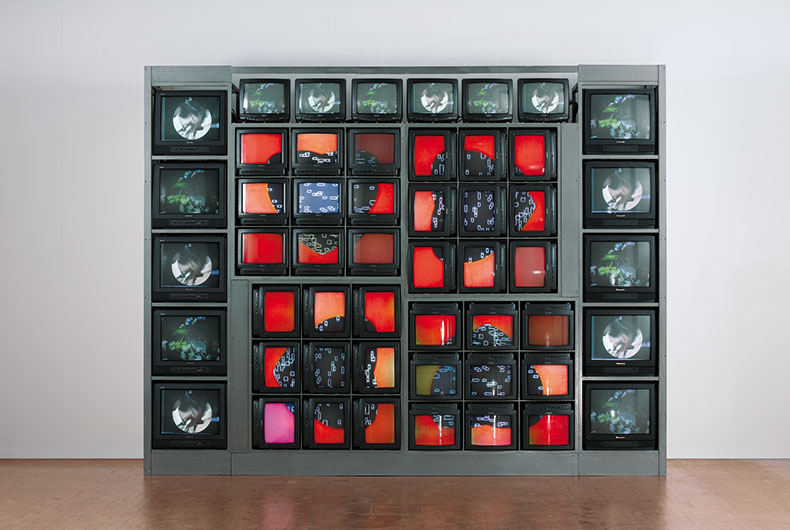
Internet Dream (1994), Nam June Paik. Photo: ONUK; © ZKM | Center for Art and Media
1. Internet Dream (1994), Nam June Paik
ZKM/Center for Art and Media, Karlsruhe
Primarily known for his ‘video walls’, Nam June Paik originally created this artwork for a television broadcaster. Long interested by the ways in which TV fosters connections between people, Paik was understandably excited by the rise of the web; as early as 1974, he was looking forward to an ‘electronic superhighway, a broadband communication network’, forecasting the Internet in its present form. Click here to find out more.
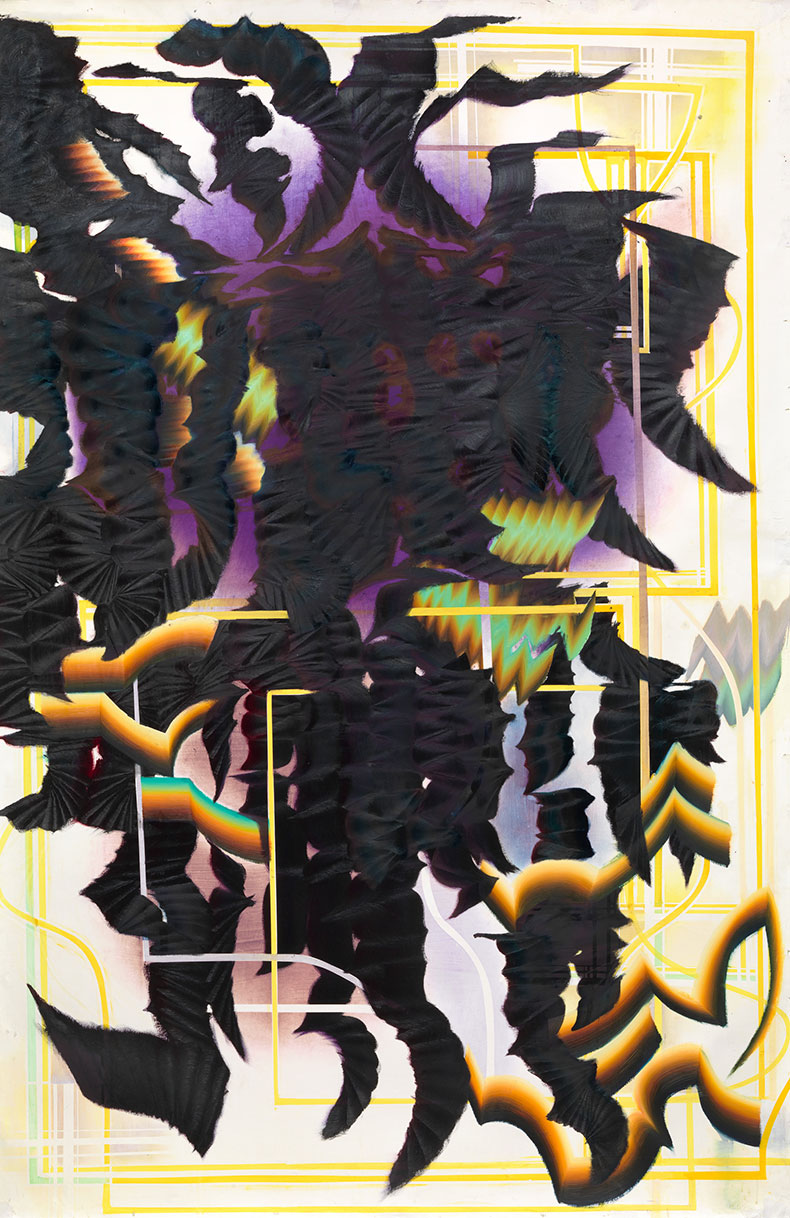
Blocked Radiant (for Ioana) (2011), Kerstin Brätsch. The Museum of Modern Art, New York. Photo: © the artist
2. Blocked Radiant (for Ioana) (2011), Kerstin Brätsch
Museum of Modern Art, New York
The German artist Kerstin Brätsch combines cutting-edge technology with centuries-old crafts to explore ‘the nature of painting in the digital age’. Her paintings recall intricate geodes or marbled paper; they are produced through experiment with repetition and mutation, and are often based on computer-generated designs made in collaboration with Adele Röder as part of DAS INSTITUT. Click here to find out more on the Bloomberg Connects app.
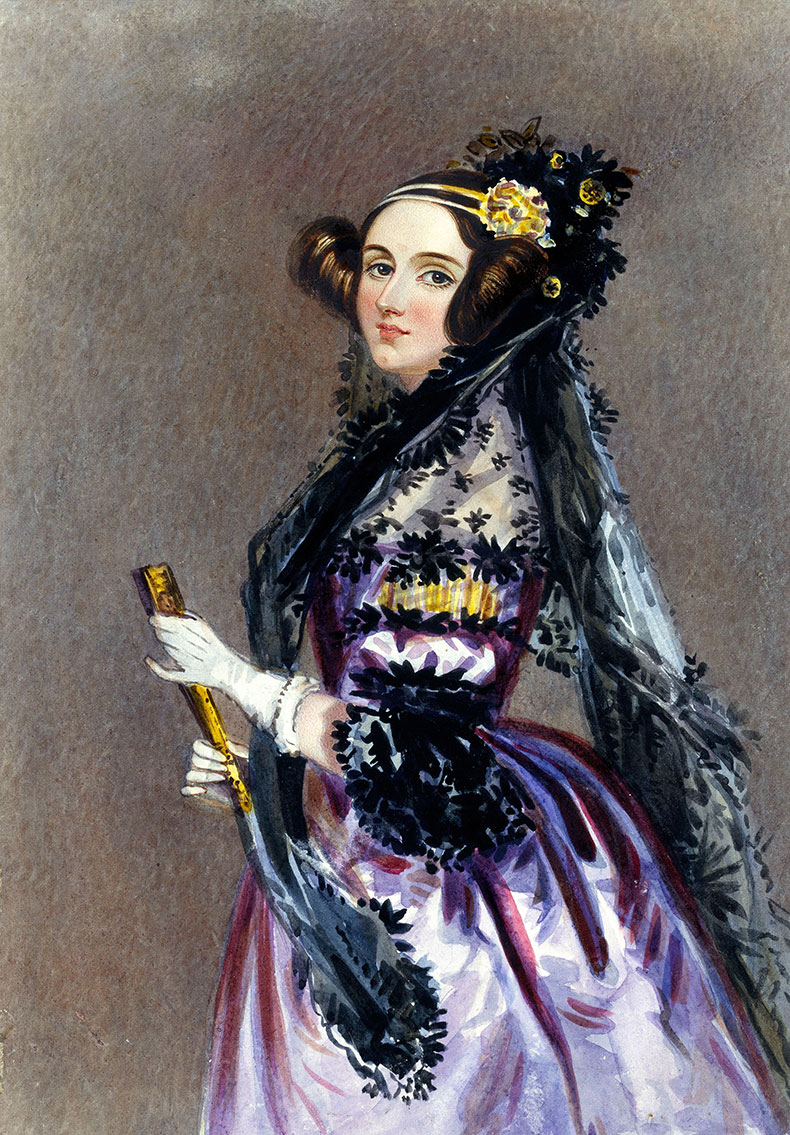
Ada King, Countess of Lovelace (Ada Lovelace) (1840), Alfred Edward Chalon. Science Museum Group. Photo: Wikimedia Commons (public domain)
3. Portrait of Ada, Countess of Lovelace (1840), Alfred Edward Chalon
Science Museum, London
Mathematician Ada Lovelace was the first person to publish an algorithm, making her the first computer programmer. She worked closely with Charles Babbage on his ‘analytical engine’ and realised that the computer contained possibilities beyond pure calculation, which paved the way for the internet as we know it today. Click here to find out more.
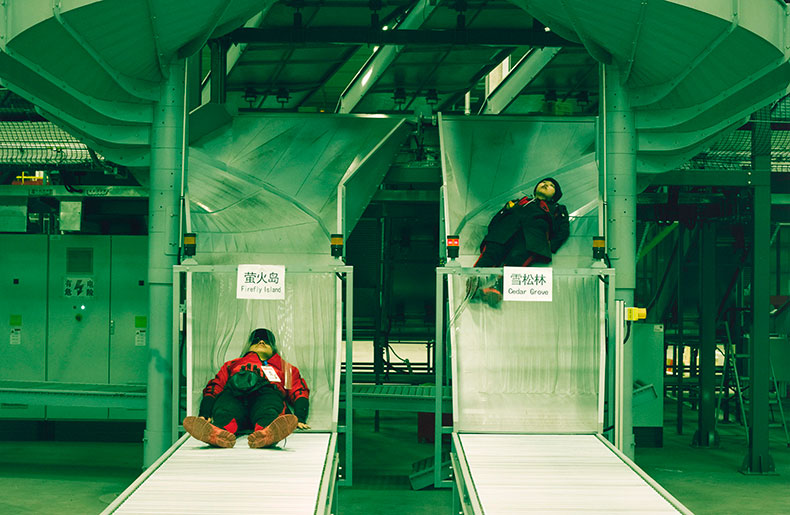
Asia One (2018), Cao Fei. Gallery of Modern Art. Queensland Art Gallery/Gallery of Modern Art, Brisbane. Photo: © the artist
4. Asia One (2018), Cao Fei
Queensland Art Gallery/Gallery of Modern Art, Brisbane
Cao Fei uses digital media to explore internet culture, globalisation and accelerated economic and technological growth, with particular reference to her own experience as a Chinese person born after the cultural revolution. She is also interested in the limits and possibilities of virtual reality and has created her own metropolis, named RMB City, in the online world of Second Life. Click here to find out more.
Download now
![]() ‘4 things to see this week’ is sponsored by Bloomberg Connects, the free arts and culture app. Bloomberg Connects lets you access museums, galleries and cultural spaces around the world on demand. Download the app here to access digital guides and explore a variety of content or scan the QR code.
‘4 things to see this week’ is sponsored by Bloomberg Connects, the free arts and culture app. Bloomberg Connects lets you access museums, galleries and cultural spaces around the world on demand. Download the app here to access digital guides and explore a variety of content or scan the QR code.
Unlimited access from just $16 every 3 months
Subscribe to get unlimited and exclusive access to the top art stories, interviews and exhibition reviews.



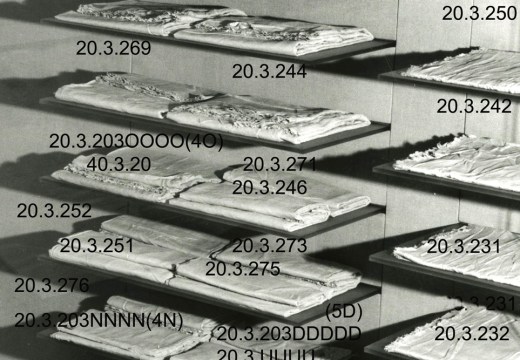
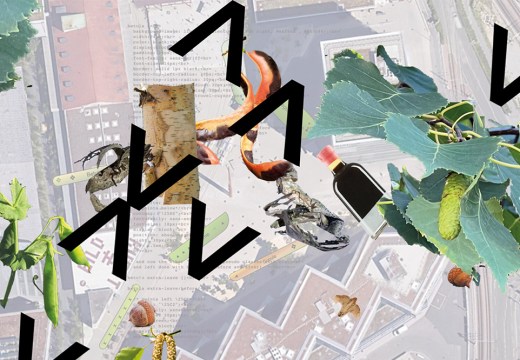









![Masterpiece [Re]discovery 2022. Photo: Ben Fisher Photography, courtesy of Masterpiece London](http://www.apollo-magazine.com/wp-content/uploads/2022/07/MPL2022_4263.jpg)
It’s time for the government of London to return to its rightful home